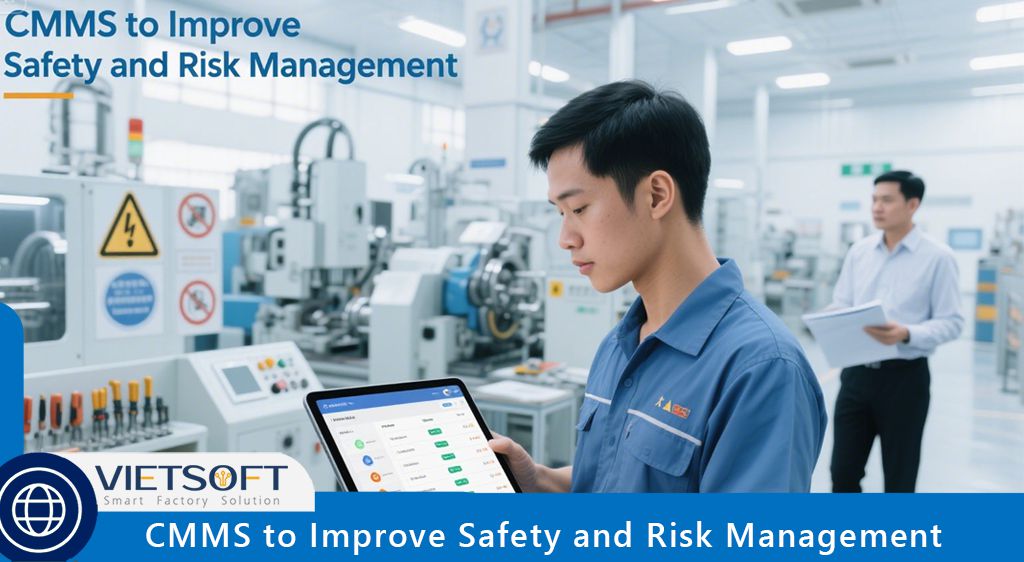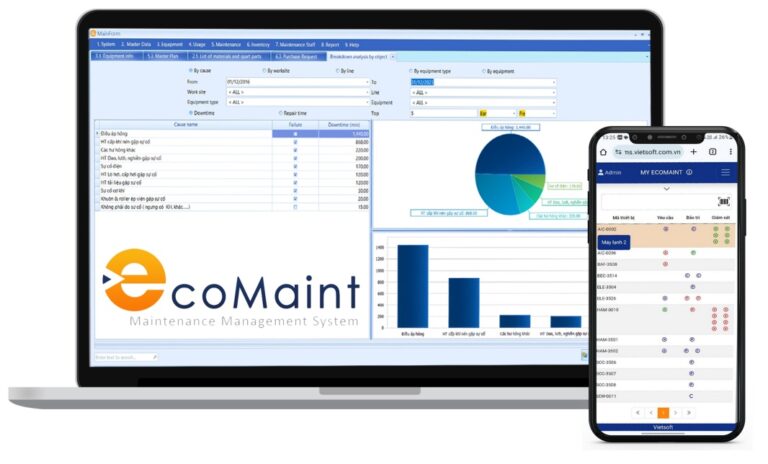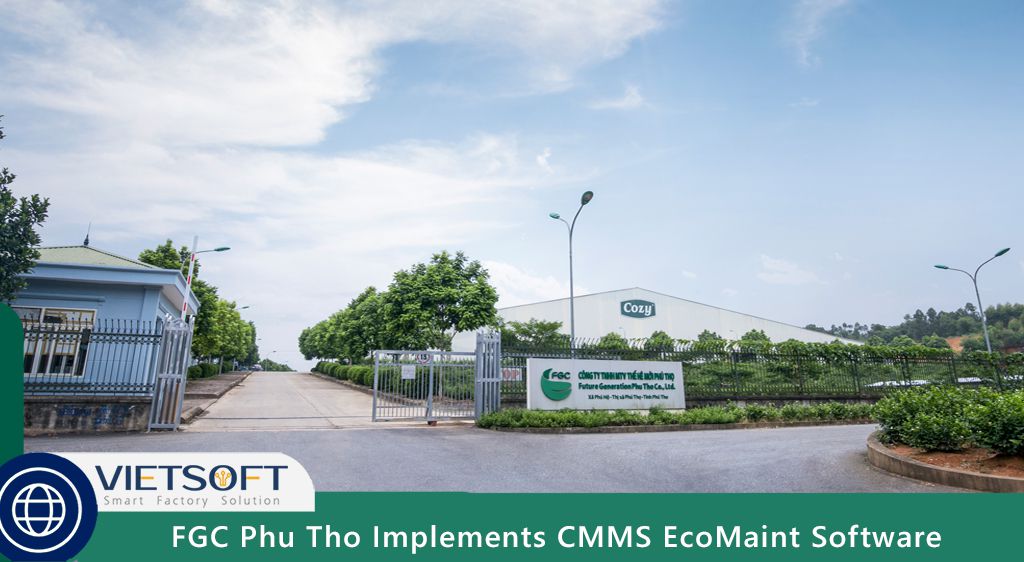
In today’s fast-paced industrial landscape, ensuring workplace safety and effective risk management is not just a regulatory requirement but a cornerstone of operational excellence. A Computerized Maintenance Management System (CMMS) is a transformative tool that empowers organizations to prioritize safety, streamline maintenance, and mitigate risks proactively. By leveraging advanced features like automated maintenance scheduling, real-time hazard alerts, and compliance tracking, CMMS to Improve Safety redefines how industries manage their assets and protect their workforce. This article explores the critical role of CMMS in enhancing safety and risk management, delving into its features, applications, benefits, and practical steps for implementation.
I. What is CMMS and Its Role in Safety and Risk Management?
A Computerized Maintenance Management System (CMMS) is a software platform designed to centralize and streamline maintenance operations, asset management, and safety protocols. Unlike traditional manual methods, CMMS digitizes workflows, enabling organizations to monitor equipment health, schedule preventive maintenance, track compliance, and address safety risks in real time. When it comes to CMMS to Improve Safety and Risk Management, the system acts as a proactive guardian, transforming reactive maintenance into a strategic approach that minimizes hazards and ensures regulatory compliance.
The role of CMMS in safety and risk management is multifaceted:
- Proactive Hazard Mitigation: By scheduling regular maintenance and inspections, CMMS prevents equipment failures that could lead to accidents.
- Compliance Assurance: CMMS tracks regulatory requirements and generates audit-ready reports, reducing the risk of penalties.
- Data-Driven Insights: Historical data analysis helps identify recurring safety issues, enabling continuous improvement.
- Employee Empowerment: Real-time access to safety protocols and training records ensures workers are well-equipped to handle tasks safely.
In industries like manufacturing, logistics, and energy—prevalent in Vietnam—CMMS is a game-changer for fostering a safety-first culture while optimizing operational efficiency.
II. Why Safety and Risk Management Matter in Industrial Operations
Safety and risk management are critical to the longevity and success of any organization. Ignoring these aspects can lead to severe consequences, including:
- Increased Downtime: Unaddressed equipment failures halt production, leading to costly delays.
- Employee Well-Being: Unsafe workplaces lower morale, increase absenteeism, and reduce productivity.
- Regulatory Penalties: Non-compliance with standards set by bodies like Vietnam’s Ministry of Labor or international organizations (e.g., OSHA, ISO) can result in fines or shutdowns.
- Reputational Damage: Safety incidents tarnish a company’s image, affecting stakeholder trust and business opportunities.
- Financial Losses: Accidents and inefficiencies drive up maintenance costs and insurance premiums.
III. Key Features of CMMS to Enhance Safety and Risk Management
CMMS platforms are equipped with features tailored to bolster safety and mitigate risks. Here’s a breakdown of the core functionalities:
1. Preventive Maintenance Scheduling
Preventive maintenance is the backbone of CMMS to Improve Safety. By automating maintenance schedules, CMMS ensures that equipment is regularly inspected and serviced before issues arise.
2. Real-Time Alerts and Notifications
CMMS acts as a “risk radar” by sending instant alerts when anomalies are detected. For example, if a conveyor belt in a logistics warehouse shows signs of wear, the system notifies technicians immediately, preventing potential accidents. This feature is critical in fast-paced environments where delays in addressing hazards can be costly.
3. Asset Tracking and Condition Monitoring
CMMS provides a comprehensive view of asset health, tracking wear and tear, maintenance history, and replacement needs. In a food processing facility, for instance, CMMS can monitor refrigeration units to ensure they operate within safe temperature ranges, preventing spoilage and health risks.
4. Incident Reporting and Analysis
By logging incidents and analyzing historical data, CMMS identifies patterns that could indicate systemic safety issues.
5. Safety Inspection Checklists
CMMS offers customizable checklists to ensure compliance with safety protocols. In Vietnam’s construction industry, where safety standards are stringent, CMMS can automate daily equipment checks, ensuring cranes and scaffolds meet regulatory requirements.
6. Inventory and Parts Management
Effective inventory management ensures that spare parts are available for timely repairs, reducing downtime and safety risks.
7. Compliance Management
CMMS centralizes regulatory documentation, making it easy to track certifications, permits, and inspection records. This is particularly valuable in Vietnam, where compliance with local labor laws and international standards (e.g., ISO 45001) is essential for avoiding penalties.
IV. Benefits of Using CMMS to Improve Safety and Risk Management
Implementing a CMMS delivers tangible benefits that enhance safety and operational efficiency. Here are the key advantages:
1. Reduced Workplace Accidents
By proactively addressing equipment issues, CMMS minimizes the risk of accidents caused by malfunctions.
2. Enhanced Regulatory Compliance
CMMS streamlines compliance by automating documentation and reporting. In 2022, the National Safety Council reported $167 billion in losses due to workplace injuries across industries. In Vietnam, where manufacturing is a high-risk sector, CMMS helps avoid such costs by ensuring adherence to safety standards.
3. Improved Employee Morale
A safe workplace fosters trust and boosts morale. CMMS empowers workers by providing easy access to safety protocols and training records, ensuring they feel confident in their roles.
4. Cost Savings
By preventing downtime and reducing maintenance costs, CMMS saves organizations significant expenses. For instance, predictive maintenance tools in CMMS can reduce repair costs by up to 20%, according to industry studies.
5. Data-Driven Decision Making
CMMS provides actionable insights through data analysis, enabling managers to prioritize high-risk areas.
6. Scalability and Flexibility
CMMS solutions like CMMS EcoMaint are scalable, catering to small factories and large industrial complexes alike. This flexibility is crucial in Vietnam’s diverse industrial landscape, from SMEs to multinational corporations.
V. How to Implement CMMS for a Safety-First Culture
Building a safety-first culture requires a strategic approach that integrates leadership, training, and technology. Here’s a step-by-step guide to leveraging CMMS to Improve Safety:
1. Step 1: Leadership Commitment
Leadership must champion safety by integrating it into the organization’s core values. Select a CMMS that aligns with your industry’s needs, such as CMMS EcoMaint, which offers tailored solutions for Vietnamese businesses. Allocate resources for system implementation and staff training.
2. Step 2: Workforce Training
Train employees on CMMS features like asset tracking, incident reporting, and compliance management. Conduct regular drills using CMMS data to simulate hazard scenarios, ensuring workers are prepared for emergencies.
3. Step 3: Technology Integration
- Asset Inventory: Upload detailed asset information, categorizing them by risk level and maintenance needs.
- Automated Safety Checks: Schedule routine inspections and audits, linking them to work orders.
- Data Centralization: Store maintenance and safety data in a unified CMMS database for easy access.
- Custom Dashboards: Create dashboards to monitor safety KPIs, such as incident rates and compliance status.
- Safety Protocol Integration: Embed safety checklists into work orders to ensure consistent adherence.
4. Step 4: Continuous Improvement
Use CMMS analytics to identify trends and refine safety protocols. Encourage employee feedback to foster engagement and ensure the system evolves with organizational needs.
VI. CMMS EcoMaint in Action
In Vietnam’s rapidly growing industrial sector, CMMS EcoMaint by Vietsoft is revolutionizing safety and risk management. EcoMaint’s user-friendly interface and mobile accessibility empowered technicians to log hazards on the go, while customizable dashboards provided managers with real-time insights into safety performance.
To explore how CMMS EcoMaint can elevate your organization’s safety and risk management, Learn more about CMMS EcoMaint here.
Contact us for consultation via hotline: 0986778578 or email: sales@vietsoft.com.vn.
VII. FAQs About CMMS and Safety Management
1. How does CMMS improve workplace safety?
CMMS enhances safety by automating maintenance schedules, tracking hazards, and ensuring compliance with regulatory standards, reducing the risk of accidents.
2. What is a risk-based maintenance framework?
A risk-based maintenance framework prioritizes maintenance tasks based on the likelihood and impact of asset failures, optimizing safety and efficiency.
3. How does CMMS support compliance in Vietnam?
CMMS centralizes documentation, automates audits, and tracks certifications, ensuring adherence to local labor laws and international standards like ISO.
4. Can CMMS reduce maintenance costs?
Yes, by preventing unexpected breakdowns and optimizing resource allocation, CMMS can reduce maintenance costs by up to 20%, according to industry estimates.
5. What industries benefit from CMMS for safety?
Manufacturing, logistics, energy, construction, and pharmaceuticals are among the industries that benefit significantly from CMMS-driven safety improvements.
VIII. Conclusion: Transforming Safety with CMMS EcoMaint
In an era where workplace safety and risk management are non-negotiable, CMMS to Improve Safety and Risk Management offers a robust solution for organizations striving for operational excellence. By automating maintenance, tracking hazards, and ensuring compliance, CMMS empowers businesses to create safer, more productive workplaces. In Vietnam’s dynamic industrial landscape, solutions like CMMS EcoMaint by Vietsoft stand out for their ability to deliver tailored, scalable safety management tools.
Whether you’re managing a small factory or a large industrial complex, embracing CMMS is a strategic investment in your workforce’s well-being and your organization’s future.




